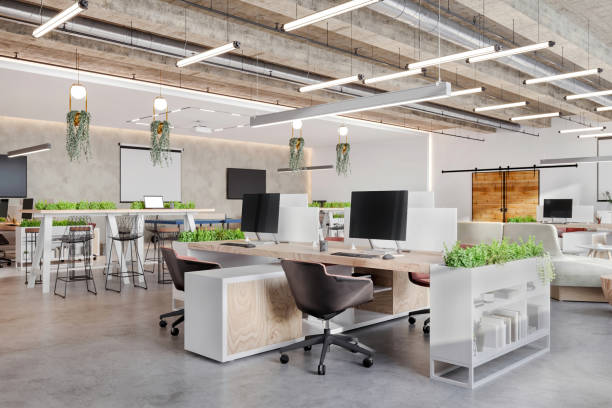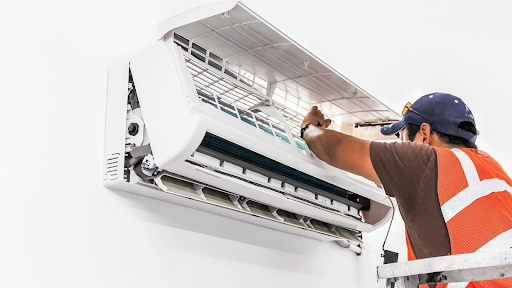Selecting the right office desks is a crucial aspect of office furniture that significantly impacts both physical well-being and mental productivity. An ergonomic desk not only enhances your workspace aesthetics but also supports your body’s needs, contributing to a healthier and more efficient work environment. Whether you’re setting up a home office or updating your company’s workspace, understanding the key features of an office desk can help you create a setting that fosters comfort and productivity.
Understanding Ergonomics and Its Importance
Ergonomics, the science of designing workspaces to fit the user’s needs, plays a pivotal role in choosing an office desk. The goal is to create a workstation that minimizes strain and promotes proper posture, reducing the risk of musculoskeletal issues such as back pain, neck strain, and repetitive strain injuries. An ergonomic desk should allow for adjustments to accommodate various body types and work styles, ensuring that users can maintain a neutral and comfortable position throughout their workday.
Key Features to Consider
Desk Height and Adjustability
One of the most important features to consider is the desk height. Ideally, your desk should be adjustable to accommodate both sitting and standing positions. Standing desks, or height-adjustable desks, can help alleviate the negative effects of prolonged sitting and offer the flexibility to switch between sitting and standing throughout the day. When sitting, your desk height should allow your elbows to be at a 90-degree angle while typing, with your feet flat on the floor or on a footrest.
Surface Area and Layout
The surface area of your desk should be spacious enough to accommodate all necessary equipment and allow for an organized workspace. A clutter-free desk not only improves productivity but also reduces stress. Consider desks with built-in storage solutions or cable management features to keep your work area tidy. The layout of the desk should facilitate easy access to essential items like your computer, documents, and office supplies without requiring excessive reaching or stretching.
Material and Durability
The material of the desk can impact both its aesthetic appeal and its functionality. Desks made from high-quality materials such as solid wood or metal are generally more durable and offer a more stable work surface. Additionally, the finish and texture of the desk should complement your office decor while being easy to clean and maintain. Choose materials that are resistant to scratches and wear, ensuring the desk remains in good condition over time.
Ergonomic Accessories and Add-ons
In addition to choosing the right desk, incorporating ergonomic accessories can further enhance your workspace comfort. Consider adding a keyboard tray to keep your arms in a natural typing position and a monitor stand to ensure your screen is at eye level. A desk chair with adjustable height, lumbar support, and armrests is also essential for maintaining proper posture and reducing strain.
Anti-Fatigue Mats
For standing desks, anti-fatigue mats can provide cushioning and support for your feet, reducing discomfort and fatigue associated with prolonged standing. These mats are designed to encourage subtle movements and shifts in weight, promoting better circulation and reducing pressure on your legs and lower back.
Cable Management
Cable management is another important consideration. Desks with built-in cable management systems help keep cords and cables organized and out of the way, reducing clutter and minimizing distractions. Look for desks with cable grommets or channels to route cables neatly and safely.
Personalization and Aesthetics
Personalizing your desk can enhance your workspace’s overall appeal and make it a more enjoyable environment. Consider choosing a desk that matches your personal style and office decor. A visually pleasing workspace can boost morale and create a more inviting atmosphere, making it easier to stay focused and motivated.
Color and Finish
The color and finish of your desk can influence the overall ambiance of your workspace. Light colors and natural finishes can create a more open and airy feel, while darker colors may add a sense of sophistication and professionalism. Choose a finish that complements the rest of your office furniture and decor to create a cohesive look.
Customization Options
Some desks offer customization options, such as adjustable height settings, built-in lighting, or modular components that can be rearranged to suit your needs. These features can provide additional flexibility and help you create a workspace that is tailored to your specific requirements and preferences.
Investing in Quality
Investing in a high-quality desk is a wise decision for both your physical health and productivity. A well-designed desk that supports your body and mind can improve your comfort, reduce fatigue, and enhance your overall work experience. While it may require a higher upfront cost, the long-term benefits of a quality desk—such as reduced risk of injury and increased productivity—make it a worthwhile investment.
When selecting an office desk, consider how it fits into your overall workspace and how it supports your ergonomic needs. By prioritizing comfort, functionality, and aesthetics, you can create a workspace that not only meets your practical requirements but also fosters a positive and productive work environment.
In summary, choosing the right office desk involves considering factors such as height adjustability, surface area, material quality, and ergonomic features. By focusing on these elements, you can create a workspace that supports your body and mind, ultimately leading to a more comfortable and productive work experience.



